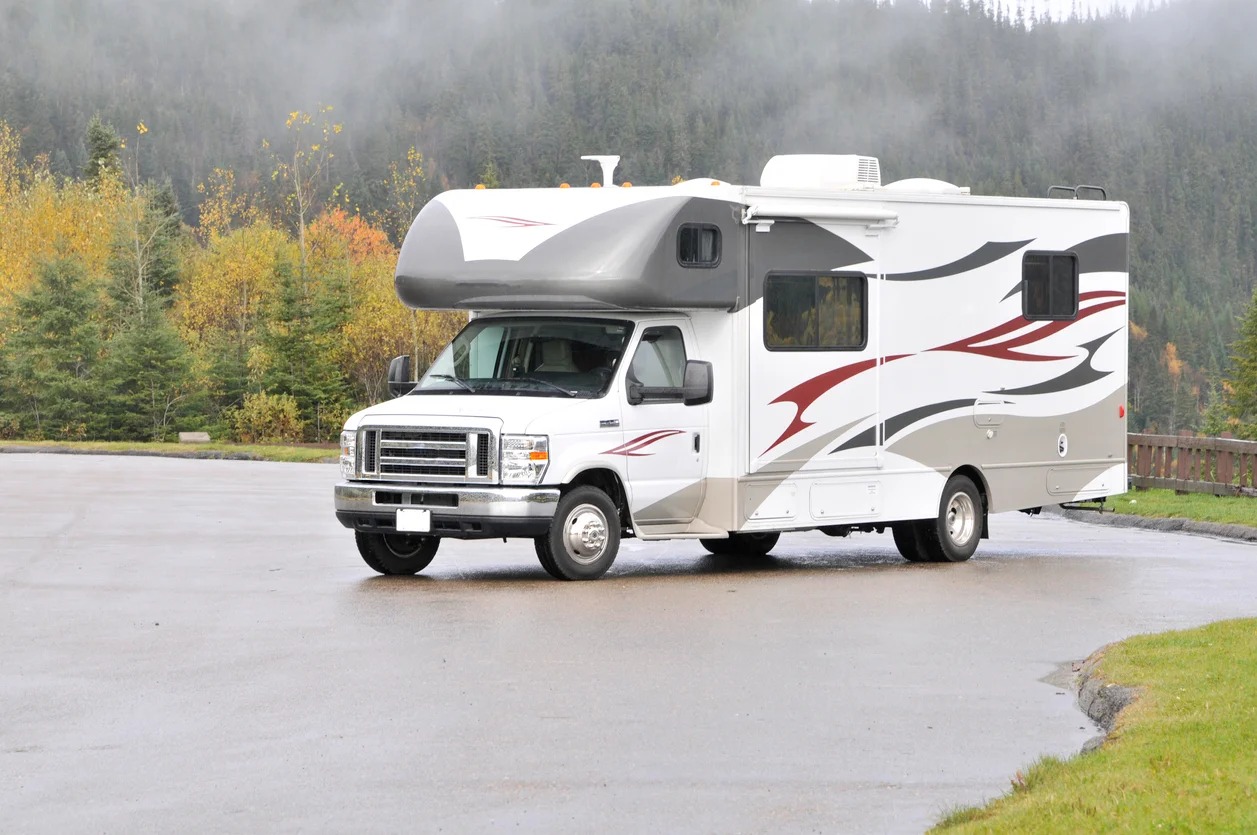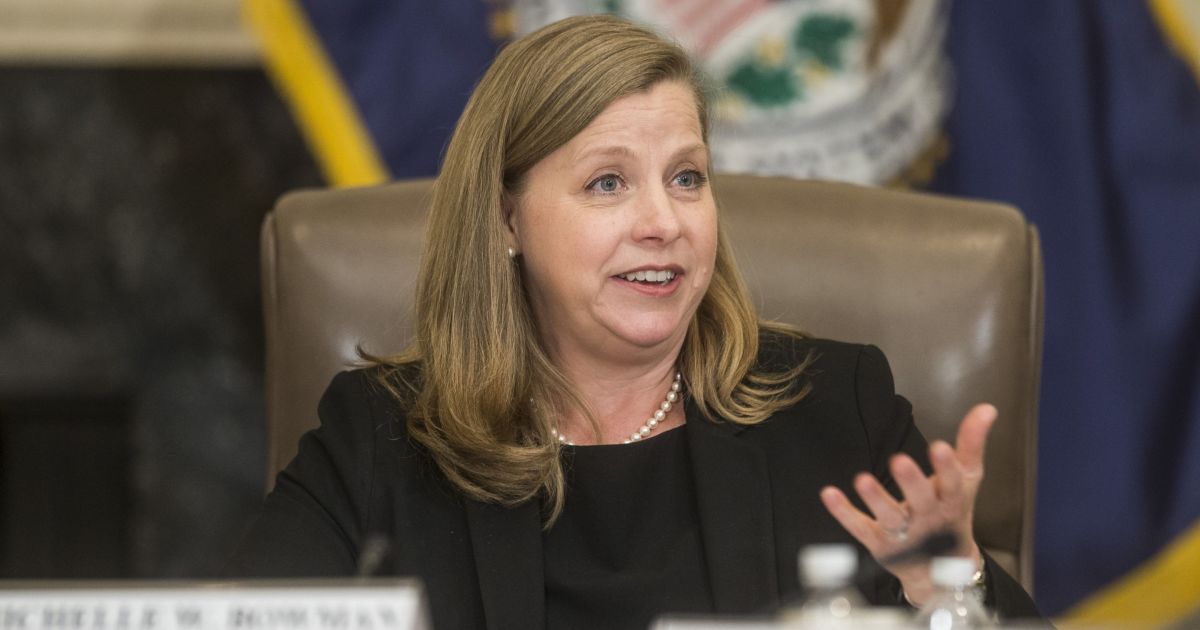

Finance
What Kind Of RV Insurance Do I Need
Published: November 23, 2023
Looking for the right RV insurance to cover your finances? Discover what kind of RV insurance you need to ensure your financial protection on the road.
(Many of the links in this article redirect to a specific reviewed product. Your purchase of these products through affiliate links helps to generate commission for LiveWell, at no extra cost. Learn more)
Table of Contents
Introduction
When it comes to owning and enjoying a recreational vehicle (RV), there are many factors to consider, including insurance coverage. RV insurance is a type of policy specifically designed to protect you and your vehicle from unexpected events, accidents, and liabilities that may arise while you are on the road.
Understanding the different types of RV insurance coverage options available can be overwhelming, especially if you are new to the world of RVing. To help you make an informed decision, this article will walk you through the various types of RV insurance coverage and highlight the importance of each.
Whether you own a motorhome, travel trailer, fifth wheel, or camper van, having the right insurance coverage is crucial. Not only does it protect your investment, but it also provides you with financial security and peace of mind while you’re out exploring the open road.
So, what exactly does RV insurance cover? Let’s dive into the different types of coverage options available and how they can benefit you in different scenarios.
Understanding RV Insurance
RV insurance is a specialized type of insurance that provides coverage for recreational vehicles such as motorhomes, travel trailers, campers, and more. It is similar to auto insurance but tailored to the unique needs and risks associated with RV ownership.
RV insurance typically includes various types of coverage, each serving a specific purpose and offering protection in different situations. Understanding these coverage options will help you choose the right insurance policy that suits your needs and budget.
Some of the key factors to consider when selecting RV insurance coverage include:
- Vehicle Type: Different types of RVs may require specific insurance coverage based on their size, value, and usage. Motorhomes, for example, may require different coverage compared to smaller travel trailers.
- Usage: Whether you use your RV as a full-time residence, for occasional road trips, or for renting out to others, the insurance requirements may vary.
- Value: The value of your RV plays a significant role in determining the coverage limits and premiums of your insurance policy.
- Location: Insurance requirements can vary depending on the state or country where your RV is registered and the places you plan to travel.
Now that we have a general understanding of RV insurance, let’s explore the different types of coverage options available and what they entail.
Liability Coverage
Liability coverage is a fundamental component of RV insurance. It provides financial protection if you are found responsible for causing injury or property damage to someone else while operating your RV.
In the event of an accident, liability coverage can help cover medical expenses, property repairs, legal costs, and other expenses incurred by a third party. This coverage is crucial because the costs of lawsuits and medical bills can be financially devastating without insurance.
Liability coverage typically consists of two main components:
- Bodily Injury Liability: This portion of liability coverage pays for medical expenses, rehabilitation costs, and lost wages for individuals injured in an accident caused by you or someone operating your RV with your permission.
- Property Damage Liability: Property damage liability covers the repair or replacement costs for another person’s property that was damaged due to your RV. This can include vehicles, buildings, fences, and other structures.
The coverage limits for liability insurance are usually indicated as two separate numbers – the maximum amount per person for bodily injury and the maximum amount for property damage per accident. For example, if your policy has liability limits of $50,000/$100,000/$50,000, this means your coverage includes up to $50,000 per person for bodily injury, $100,000 total per accident for bodily injury, and $50,000 for property damage.
It is important to carefully review and consider the appropriate liability limits for your RV insurance policy. Higher coverage limits provide greater financial protection but may result in higher premiums. Be sure to consult with your insurance provider to determine the adequate liability coverage for your specific needs and circumstances.
Collision Coverage
Collision coverage is another essential component of RV insurance that helps protect your vehicle from damages resulting from a collision with another vehicle or object, regardless of who is at fault.
In the event of an accident, collision coverage will help cover the repair or replacement costs of your RV, up to the policy’s coverage limit. This is particularly important if your RV is new or has a significant market value.
Collision coverage is optional but highly recommended, especially for newer or more valuable RVs. Without collision coverage, you would be solely responsible for covering the repair or replacement costs of your RV if it is damaged as a result of a collision.
It is important to note that collision coverage typically carries a deductible, which is the amount you will have to pay out of pocket before the insurance coverage kicks in. You can choose the deductible amount that best fits your budget, keeping in mind that a higher deductible will generally result in lower premiums, but would also mean a higher out-of-pocket expense in the event of a claim.
When considering collision coverage for your RV insurance, it is crucial to review the specifics of the policy. Different insurers may have variations in coverage limits, deductibles, and other terms. It is recommended to compare quotes from multiple insurance providers to ensure you get the best coverage at the most competitive price.
Keep in mind that collision coverage focuses on damages resulting from a collision with another object, such as another vehicle, a tree, or a lamppost. If your RV sustains damages from other incidents, such as theft, vandalism, or natural disasters, you may need additional coverage, such as comprehensive coverage.
Comprehensive Coverage
Comprehensive coverage, also known as “other than collision” coverage, is an important type of RV insurance that provides coverage for a wide range of damages or losses that may occur outside of a collision.
Comprehensive coverage protects your RV from non-collision related incidents such as theft, vandalism, fire, hail, falling objects, and natural disasters. It offers financial protection for the repair or replacement costs of your RV if it is damaged or destroyed due to these covered perils.
Having comprehensive coverage is recommended, especially if you have a newer or more valuable RV, as it provides added peace of mind and financial protection against unexpected events.
Similar to collision coverage, comprehensive coverage typically comes with a deductible that you choose when purchasing the policy. The deductible is the amount you are responsible for paying out of pocket before the insurance coverage takes effect.
When deciding on the appropriate level of comprehensive coverage, consider the value of your RV, the level of risk for theft or damage in your area, and your budget. Keep in mind that higher deductibles often result in lower premiums.
It’s essential to review the specific coverage limits, terms, and exclusions of your comprehensive coverage with your insurance provider. Different insurers may have variations regarding the perils covered and the extent of the coverage.
Remember that comprehensive coverage is designed to protect against non-collision damages, so it works in combination with collision coverage to ensure comprehensive protection for your RV.
By obtaining comprehensive coverage, you can have peace of mind knowing that your RV is protected against a wide range of risks, offering you financial security and the ability to enjoy your adventures worry-free.
Uninsured/Underinsured Motorist Coverage
Uninsured/Underinsured Motorist (UM/UIM) coverage is an essential component of RV insurance that provides protection in the event of an accident caused by another driver who either does not have insurance or does not have enough insurance to cover the damages.
In many states, it is mandatory to have UM/UIM coverage for motor vehicles, including RVs. This coverage helps ensure that you are not left financially burdened if you are involved in an accident with an uninsured or underinsured driver.
If you are involved in an accident with a driver who is at fault and lacks adequate insurance coverage, UM/UIM coverage can help cover medical expenses, property damage, and other losses that you may incur. It bridges the gap between the other driver’s insufficient insurance coverage and the actual costs of the accident.
UM/UIM coverage can also provide protection in hit-and-run accidents where the responsible party cannot be identified. In such cases, your policy’s UM/UIM coverage can help compensate for the damages and medical expenses.
The coverage limits for UM/UIM coverage are typically listed as two separate amounts: per person and per accident. For example, if your policy has UM/UIM limits of $50,000/$100,000, it means that the coverage extends up to $50,000 per person and $100,000 total per accident.
It’s important to note that UM/UIM coverage may vary depending on the state regulations and insurance policies offered by different providers. It’s recommended to carefully review the terms, limits, and exclusions of your UM/UIM coverage with your insurance provider to ensure you have adequate protection.
Having UM/UIM coverage for your RV insurance is crucial, as it safeguards you against potential financial losses resulting from accidents with uninsured or underinsured drivers. It provides an added layer of security and ensures that you can enjoy your RV adventures with peace of mind.
Medical Payments Coverage
Medical Payments coverage, also known as MedPay, is an important aspect of RV insurance that provides coverage for medical expenses incurred by you and your passengers as a result of an accident, regardless of who is at fault.
MedPay coverage typically includes payment for necessary medical treatments, ambulance fees, hospital visits, surgeries, and other related medical expenses. It offers essential financial protection and peace of mind in the event of injuries sustained in an RV accident.
One of the key benefits of medical payments coverage is that it provides quick reimbursement for medical expenses, regardless of any ongoing legal proceedings or potential liability disputes. This makes it a valuable coverage option, especially when immediate medical attention is required.
It’s important to note that MedPay coverage primarily focuses on medical expenses and does not cover other costs such as lost wages or property damage. For those types of expenses, other coverage options such as liability or collision coverage may come into play.
The coverage limits for MedPay can vary depending on the policy, but they are typically listed as a total dollar amount per person, per accident. For example, if you have MedPay coverage with a limit of $10,000 per person, it means that each individual injured in the accident can receive up to $10,000 in medical payments.
It’s worth noting that MedPay coverage is optional in some states, while it is mandatory in others. Even if it is not required, considering MedPay as part of your RV insurance can provide valuable financial protection and help alleviate the burden of medical expenses.
When selecting the appropriate MedPay coverage, carefully review the coverage limits, terms, and exclusions of the policy. Discuss your specific needs and concerns with your insurance provider to ensure you have the right level of coverage for your RV adventures.
By having Medical Payments coverage, you can rest assured knowing that you and your passengers are protected in the event of an accident, allowing you to focus on recovery without the added stress of medical bills.
Personal Effects Coverage
Personal Effects coverage is an important aspect of RV insurance that provides protection for your personal belongings and possessions that are inside your RV. This coverage ensures that your personal items are safeguarded against theft, damage, or loss while you are traveling.
When you go on RV trips, there is a good chance that you will bring valuable items such as electronics, camping gear, clothing, and other personal belongings with you. Personal Effects coverage helps cover the cost of repairing or replacing these items if they are stolen, damaged, or destroyed due to covered incidents.
It’s important to note that Personal Effects coverage is typically provided on an actual cash value basis. This means that the insurance company will reimburse you for the value of the items at the time of the loss, taking into account depreciation. However, some insurance providers may offer options for replacement cost coverage, which would provide reimbursement for the full cost of replacing the items.
Before purchasing Personal Effects coverage, it’s important to review the policy’s coverage limits and exclusions. Some policies may have specific limits on certain types of items, such as jewelry or electronics. Additionally, there may be certain exclusions for certain valuable items or limitations on coverage for high-value items.
If you have valuable or high-priced personal belongings that exceed the coverage limits of your RV insurance policy, you may want to consider obtaining separate coverage, such as a valuable items policy or a rider on your homeowner’s insurance, to provide additional protection.
When traveling in your RV, it’s important to keep an inventory of your personal belongings and document their value as accurately as possible. This documentation can be helpful in the event of a claim and can assist you in providing proof of ownership and value.
Having Personal Effects coverage as part of your RV insurance policy ensures that your personal belongings are protected, providing you with peace of mind and allowing you to enjoy your RV adventures without worrying about the loss or damage of your possessions.
Roadside Assistance Coverage
Roadside Assistance coverage is an essential component of RV insurance that provides valuable support and assistance if your RV breaks down or encounters mechanical issues while on the road.
While traveling in your RV, unexpected breakdowns can happen, leading to mechanical failure, flat tires, battery issues, or other problems that may leave you stranded. That’s where Roadside Assistance coverage comes in. It offers peace of mind and provides access to immediate help when you need it most.
With Roadside Assistance coverage, you can count on services such as towing, jump-starts, fuel delivery, tire changes, locksmith services, and even emergency transportation and accommodations if needed. This coverage helps minimize the stress and inconvenience of unexpected breakdowns, ensuring that you can get back on the road as quickly as possible.
Roadside Assistance coverage is especially important for RV owners, as their vehicles are larger and often require specialized assistance to tow or repair. Unlike smaller vehicles, RVs may have different towing requirements or need specific tools and equipment for repairs, making Roadside Assistance coverage tailored to RVs an important consideration.
When selecting Roadside Assistance coverage, it’s important to review the specifics of the coverage, including the types of services provided, the coverage limits, and any exclusions or limitations. Different insurance providers may offer different levels of coverage, so it’s essential to choose one that best suits your needs and travel habits.
Having Roadside Assistance coverage as part of your RV insurance policy provides peace of mind and ensures that help is just a phone call away in case of an emergency or breakdown. It allows you to focus on enjoying your RV adventures without worrying about the potential inconvenience and costs associated with unexpected roadside issues.
Total Loss Replacement Coverage
Total Loss Replacement (TLR) coverage is a valuable addition to RV insurance that provides coverage for the replacement cost of your RV in the event of a total loss.
In the unfortunate event that your RV is declared a total loss due to damage beyond repair or theft, TLR coverage ensures that you receive the funds needed to replace your RV with a brand new, similar model or one of comparable value, without depreciation being taken into account.
This coverage is especially important for RV owners who have recently purchased a new RV or have a high-value vehicle, as it protects against potential financial loss in the event of a catastrophic incident.
It’s important to note that TLR coverage typically has certain conditions and limitations. These may include the age and condition of the RV at the time of the loss and may also require you to purchase a replacement RV of similar type and value within a specified timeframe.
When considering TLR coverage, it’s crucial to carefully review the terms, conditions, and coverage limits of the policy. Different insurance providers may offer variations of this coverage, so it’s important to choose one that aligns with your needs and preferences.
It’s worth noting that TLR coverage is typically an optional add-on to your RV insurance policy and may come with additional premiums. However, the financial protection and peace of mind it provides can be well worth the investment.
By having Total Loss Replacement coverage, you can enjoy your RV travels with confidence, knowing that even in the face of a total loss, you are covered and can quickly get back on the road with a replacement RV.
Conclusion
Choosing the right RV insurance coverage is crucial for protecting your investment and ensuring peace of mind while you’re enjoying your RV adventures. Understanding the different types of coverage options available can help you make an informed decision that suits your specific needs and budget.
Liability coverage is essential and provides financial protection if you are found responsible for causing injury or property damage to someone else. Collision coverage protects your RV from damages resulting from a collision with another vehicle or object, while comprehensive coverage provides coverage for non-collision-related damages like theft, vandalism, and natural disasters.
Uninsured/Underinsured Motorist coverage is crucial in the event of an accident with a driver who lacks sufficient insurance coverage. Medical Payments coverage ensures that medical expenses for you and your passengers are covered in the event of an accident, and Personal Effects coverage protects your personal belongings inside the RV.
Roadside Assistance coverage provides invaluable support and assistance when you encounter mechanical issues or breakdowns on the road, while Total Loss Replacement coverage ensures that you can replace your RV with a brand new one in the event of a total loss.
When selecting RV insurance, it’s important to carefully review the coverage limits, deductibles, and terms of each policy. Consider factors such as the value of your RV, how you use it, and the risks you may encounter on your travels.
Finally, to ensure you have the best coverage at a competitive price, it is recommended to compare quotes from different insurance providers and consult with a reputable insurance agent who specializes in RV insurance.
By having the right RV insurance coverage, you can navigate the open road with confidence, knowing that you are protected against unexpected events and financial burdens. So, get out there, explore, and enjoy your RV adventures, knowing that you are covered every step of the way.














